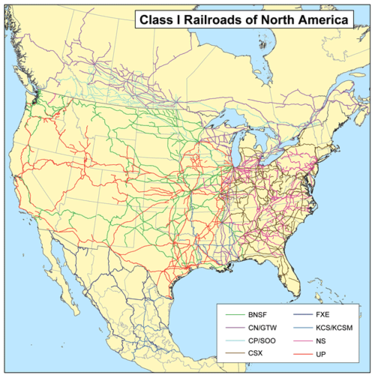The Consolidation of Class I Railroads
In the vast tapestry of the American transportation network, Class I railroads play a pivotal role. These large, interconnected systems of tracks, locomotives, and freight cars are the backbone of freight transportation in the United States. Over the years, the railroad industry has undergone significant changes, including mergers and acquisitions that have reshaped the landscape. In this article, we will explore the consolidation of Class I railroads, from their historical origins to the formation of today's major players, and the regulatory challenges and market dynamics that have defined this industry transformation.
The Mergers and Acquisitions that Reshaped the Industry
Early Railroad Expansion
The origins of Class I railroads can be traced back to the 19th century when the United States was experiencing a period of rapid industrialization and westward expansion. The construction of railroads played a vital role in connecting the nation and facilitating the movement of goods and people. During this era, numerous small railroads sprang up, often serving local or regional markets.
The Golden Age of Railroad Mergers
The late 19th and early 20th centuries witnessed a flurry of mergers and acquisitions within the railroad industry. This period, often referred to as the "Golden Age of Railroad Mergers," was characterized by the consolidation of smaller railroads into larger, more efficient systems. Notable mergers during this time included the formation of the Pennsylvania Railroad, the New York Central Railroad, and the Southern Pacific Railroad, among others.
Regulatory Initiatives
To prevent monopolistic practices and ensure fair competition, the federal government began to regulate the railroad industry. The Interstate Commerce Act of 1887 was a milestone in this regard, establishing the Interstate Commerce Commission (ICC) to oversee railroad activities. The ICC's primary objective was to regulate rates and prevent discriminatory practices.
The Formation of Today's Major Class I Railroads

The Staggers Act of 1980
The regulatory landscape continued to evolve, culminating in the Staggers Act of 1980. This landmark legislation brought significant deregulation to the railroad industry, allowing railroads more flexibility in pricing, rate negotiations, and operations. This deregulation set the stage for a new era of consolidation within the industry.
The Big Four
The most prominent Class I railroads in the United States today are often referred to as the "Big Four." These railroads are the result of various mergers and acquisitions that occurred in the post-deregulation era:
- Union Pacific Railroad: Union Pacific is the largest Class I railroad in the United States, formed through the merger of the Union Pacific and the Southern Pacific railroads in 1996.
- BNSF Railway: The Burlington Northern Santa Fe Railway was created in 1995 when the Burlington Northern and Santa Fe railroads joined forces.
- Norfolk Southern Corporation: Norfolk Southern traces its roots to various mergers, with the most significant being the consolidation of the Norfolk and Western Railway and the Southern Railway in 1982.
- CSX Transportation: CSX was formed in 1980 through the merger of the Chessie System and Seaboard Coast Line Industries.
Smaller Class I Railroads
In addition to the Big Four, there are a few smaller Class I railroads that serve specific regions and markets, such as Kansas City Southern and Canadian Pacific Railway. These railroads have also played essential roles in the North American transportation network.
Regulatory Challenges and Market Dynamics
Ongoing Regulation
Despite the deregulation brought about by the Staggers Act, the railroad industry remains subject to various federal regulations, particularly concerning safety, environmental impact, and competition. Regulatory agencies like the Surface Transportation Board (STB) continue to oversee mergers and other significant industry changes.
Market Dynamics
The Class I railroad industry faces several market dynamics and challenges in the 21st century. These include competition with other modes of transportation, such as trucking and air freight, as well as the need to invest in infrastructure and technology to maintain operational efficiency and meet environmental standards.
Future Prospects
The consolidation of Class I railroads has created powerful transportation networks that are essential for the movement of goods across the country. The industry's future will depend on its ability to adapt to changing market conditions, invest in sustainable practices, and continue to serve as a vital link in the supply chain of the United States.
In conclusion, the consolidation of Class I railroads in the United States has been a dynamic process, shaped by historical mergers, regulatory changes, and evolving market dynamics. While the industry's landscape has transformed over the years, its importance in the nation's transportation infrastructure remains as strong as ever. The ongoing challenge for Class I railroads is to balance the need for profitability with the responsibility of providing efficient, safe, and sustainable freight transportation services for generations to come.
Recent Posts
-
Enhancing Your Model Railroad: Adding Spectacular Special Effects
Embarking on the journey of model railroading opens up a world of creativity and craftsmanship, wher
-
All Aboard the Wisdom Express: Life Lessons from Model Railroading
Embarking on the journey of model railroading opens the door to a world where imagination meets prec
-
Capturing History in Miniature: The Art of Prototype Modeling in the Model Railroad World
Prototype modeling in the model railroad world involves creating miniature replicas of real-life tra




